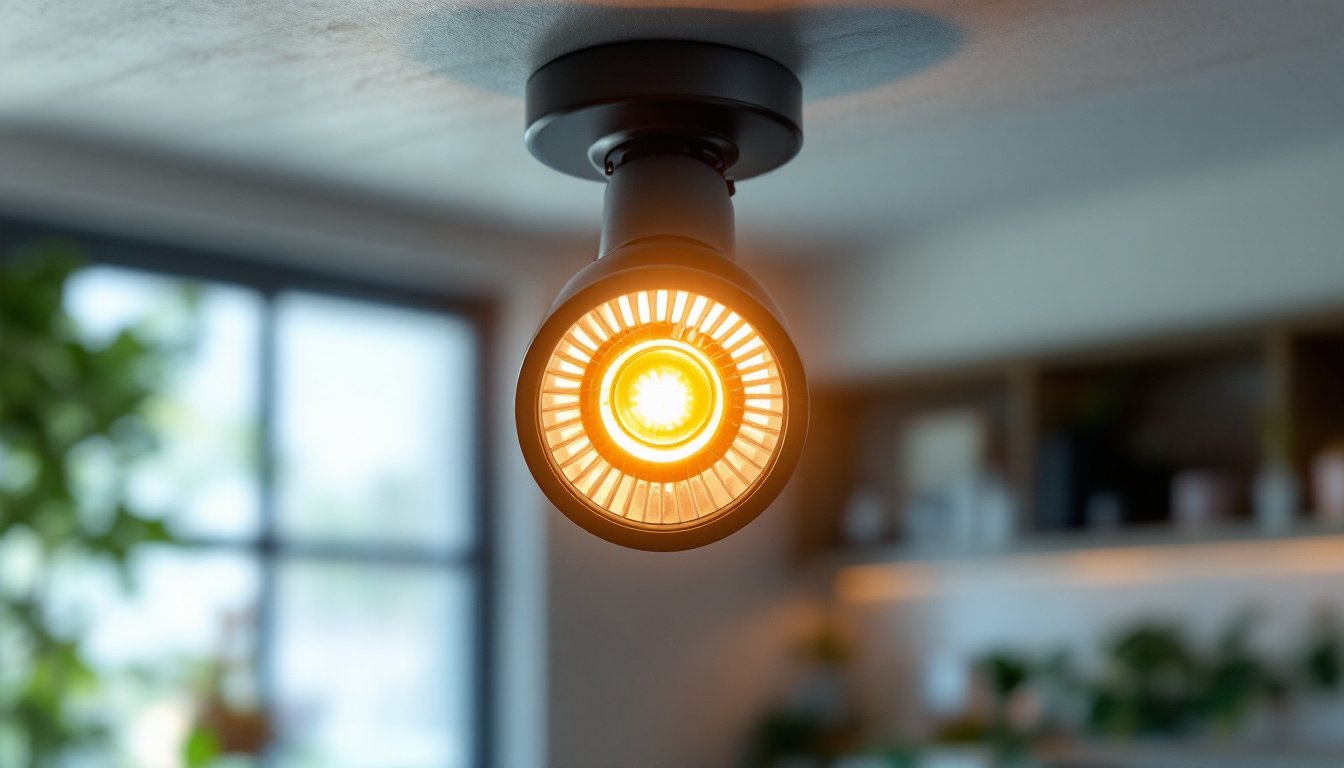
The lighting industry is constantly evolving, with new technologies and standards emerging regularly. Among these developments is the T12 fluorescent lamp, a type of lighting that has been largely phased out in favor of more energy-efficient options. However, many lighting contractors still encounter T12 fixtures in their projects. Understanding the nuances of T12 lighting is crucial for contractors aiming to provide comprehensive solutions to their clients.
T12 lamps are 12/8 inch in diameter and were once a staple in commercial and industrial lighting applications. They typically operate on magnetic ballasts, which are less energy-efficient compared to the electronic ballasts used in modern lighting systems. This section will explore the characteristics of T12 lighting and why it remains relevant for contractors.
One of the defining features of T12 lamps is their larger diameter, which affects not only their light output but also their energy consumption. T12 lamps generally produce a warm light, making them suitable for various environments, from offices to retail spaces. However, their energy efficiency is significantly lower than that of T8 or T5 lamps, which are now the industry standard.
Moreover, T12 lamps are often available in different color temperatures, allowing for some flexibility in design. However, the fact that they require magnetic ballasts means that their performance can be inconsistent, leading to flickering and reduced lifespan. This inconsistency can be a point of concern for contractors who prioritize reliability in their lighting solutions. Additionally, the physical size of T12 lamps can limit their use in certain fixtures, making it essential for contractors to evaluate the compatibility of existing systems when considering upgrades or replacements.
Despite their drawbacks, T12 lamps have a certain nostalgic charm and are sometimes preferred in specific applications where the warm glow they emit is desired. In settings such as vintage-themed restaurants or retro-style shops, the aesthetic appeal of T12 lighting can enhance the overall ambiance, making it a unique choice for contractors looking to meet specific client needs.
As energy efficiency regulations have tightened, many contractors have shifted their focus to T8 and T5 lamps, which offer improved performance and lower energy consumption. The transition from T12 to these more efficient options is not just a trend; it is often mandated by local codes and regulations. This shift means that contractors must be aware of the implications when working with existing T12 fixtures.
For instance, retrofitting T12 fixtures with T8 or T5 lamps often requires replacing the ballast, which can add to project costs and complexity. Understanding the technical requirements for these retrofits is essential for contractors looking to provide seamless transitions for their clients. Additionally, contractors should consider the potential for rebates or incentives from utility companies that encourage the adoption of energy-efficient lighting solutions, which can offset some of the costs associated with these upgrades.
Furthermore, the shift to more efficient lighting options is not solely about compliance; it also presents an opportunity for contractors to educate their clients on the long-term benefits of energy-efficient lighting. By emphasizing the cost savings on energy bills, reduced maintenance frequency, and the positive environmental impact of switching to T8 or T5 systems, contractors can position themselves as knowledgeable partners in their clients’ lighting decisions, fostering trust and potentially leading to more business opportunities in the future.
Despite the declining use of T12 lamps, many contractors still encounter them in their projects. However, several common oversights can lead to complications, increased costs, and dissatisfied clients. Identifying these pitfalls is crucial for ensuring successful lighting installations.
One of the most significant oversights when dealing with T12 fixtures is neglecting ballast compatibility. Many contractors assume that they can simply replace T12 lamps with T8 or T5 lamps without considering the ballast. However, T12 lamps require magnetic ballasts, while T8 and T5 lamps operate on electronic ballasts. This incompatibility can lead to flickering, reduced light output, or even complete fixture failure.
Contractors must conduct thorough assessments of existing fixtures and their ballasts to ensure compatibility before making any replacements. This step is crucial for maintaining the integrity and performance of the lighting system.
Another common oversight is underestimating the energy costs associated with T12 lighting. While T12 lamps may be less expensive upfront, their higher energy consumption can lead to increased operational costs over time. Contractors should provide clients with a comprehensive analysis of energy savings when transitioning to more efficient lighting solutions.
By presenting a clear picture of long-term energy costs, contractors can help clients make informed decisions that align with their budgets and sustainability goals. This approach not only enhances customer satisfaction but also positions the contractor as a knowledgeable and trustworthy advisor.
While T12 lamps may still be in use, the benefits of upgrading to more efficient lighting solutions are compelling. Understanding these advantages can help contractors make a strong case for modernization to their clients.
One of the most significant benefits of upgrading from T12 to T8 or T5 lighting is improved energy efficiency. T8 and T5 lamps consume significantly less energy while providing comparable or even superior light output. This efficiency translates to lower utility bills and a reduced carbon footprint, aligning with many organizations’ sustainability initiatives.
Moreover, energy-efficient lighting solutions often qualify for rebates and incentives, further reducing the overall cost of the upgrade. Contractors should be well-versed in these programs to guide clients through the financial benefits of transitioning away from T12 lighting.
In addition to energy savings, upgrading to T8 or T5 lamps often results in enhanced lighting quality. These newer technologies offer better color rendering and more consistent light distribution, improving the overall ambiance of a space. For contractors, this means happier clients who appreciate the aesthetic and functional improvements in their environments.
Furthermore, the longer lifespan of T8 and T5 lamps reduces maintenance costs and the frequency of replacements, providing added value to clients. Contractors can highlight these advantages to differentiate their services in a competitive market.
When faced with the task of retrofitting T12 fixtures, several considerations must be taken into account to ensure a successful transition. Proper planning and execution can make a significant difference in the outcome of the project.
Before initiating any retrofitting project, it is essential to assess the existing infrastructure thoroughly. This assessment should include evaluating the condition of the fixtures, ballasts, and wiring. Understanding the current state of the lighting system will help contractors determine the best approach for the retrofit.
Additionally, contractors should consider the layout and design of the space. Different areas may have varying lighting needs, and a one-size-fits-all approach may not be effective. Tailoring the retrofit to the specific requirements of each area can enhance the overall performance of the lighting system.
Choosing the right replacement options is crucial for a successful retrofit. Contractors should consider factors such as energy efficiency, color temperature, and lumen output when selecting new lamps. It is also important to evaluate the compatibility of the new lamps with existing ballasts.
Contractors may also explore the option of installing LED retrofits, which can offer even greater energy savings and longevity compared to traditional fluorescent lamps. While the initial investment for LED technology may be higher, the long-term benefits often outweigh the costs.
As lighting technology continues to evolve, educating clients about their options is essential for contractors. Many clients may not be aware of the benefits of upgrading from T12 to more efficient lighting solutions. Providing clear and concise information can empower clients to make informed decisions.
One effective way to educate clients is by presenting detailed cost-benefit analyses. This analysis should outline the initial costs of upgrading, potential energy savings, maintenance costs, and any available incentives or rebates. By providing a comprehensive overview, contractors can help clients understand the long-term financial benefits of making the switch.
Additionally, sharing case studies of previous projects can illustrate the positive outcomes of upgrading lighting systems. Real-world examples can resonate with clients and reinforce the contractor’s expertise in the field.
Finally, offering ongoing maintenance and support can further enhance the contractor-client relationship. Providing clients with information about the expected lifespan of new fixtures, as well as recommendations for maintenance, can help ensure that the lighting system continues to perform optimally.
By positioning themselves as trusted advisors, contractors can foster long-term relationships with clients, leading to repeat business and referrals.
In the ever-evolving landscape of lighting technology, understanding the nuances of T12 fixtures is essential for lighting contractors. While T12 lamps may still be present in many projects, the benefits of upgrading to more efficient options cannot be overstated. By recognizing common oversights, educating clients, and providing tailored solutions, contractors can enhance their service offerings and ensure client satisfaction.
Ultimately, the transition away from T12 lighting is not just about compliance with regulations; it is about embracing innovation and providing clients with the best possible lighting solutions. By staying informed and proactive, lighting contractors can navigate the complexities of the industry and thrive in a competitive market.
Ready to move beyond T12 lighting and offer your clients the most efficient and cost-effective lighting solutions? At LumenWholesale, we provide lighting contractors with an exceptional range of spec-grade lighting products at unbeatable wholesale prices. Our commitment to quality and affordability means you can upgrade your projects with confidence, knowing you’re backed by the highest industry standards. Plus, with free shipping on bulk orders, you can enjoy the convenience of premium lighting delivered directly to you, without any hidden fees. Don’t let outdated lighting hold you back. Embrace innovation and value with Wholesale Lighting at the Best Value from LumenWholesale.

Discover essential insights into light fixtures that every lighting contractor should know.

Discover the ultimate guide to T5 lights, exploring their benefits, applications, and how they can transform your lighting setup.

Discover how powerful solar lighting transforms modern lighting solutions, offering eco-friendly, cost-effective, and reliable illumination—learn key benefits and optimize your space today!.

Discover why the 2-inch can light for GU10 bulbs is a game-changer for lighting contractors.